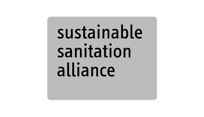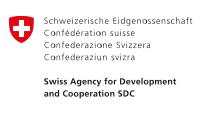Manually powered waste collection and transport vehicles are labour-intensive solutions which are suitable when the topography is fairly flat, roads are narrow or congested and distances are short. Given its limited load capacity, simplicity and low cost, it is often the default solution for household primary collection.

Manual collection and transportation of waste is defined as being powered by human strength alone. The wide range of non-motorised vehicles typically used for the transportation of goods can be adapted for waste transportation. This ensures local maintenance and repair. Manually carrying waste without any vehicle is rare and limited to very small and inaccessible footpaths and hilly terrains. Load volumes of manual waste transport vehicles are typically small and, given the slow speeds, travel distances are short. These vehicles are suitable for waste collection in dense neighbourhoods with limited road access for door-to-door, kerbside or communal storage collection. After collection, the waste transported by manually powered vehicles is ideally delivered to transfer stations C.5 where it is handed over to larger, often motorised transport vehicles (C.3 and C.4).
Design Considerations
Given the limited payload per vehicle, service coverage requires a large workforce and vehicle fleet. One person or a small team can operate one vehicle. Ideally, common local transport solutions, such as wheelbarrows, pushed or pulled handcarts or pedal tricycles with front or rear-mounted storage compartments, are customised for waste transportation. This can include different storage compartments (if waste is segregated) and extra hooks for bags. Handcarts with more than one axis facilitate stability and balancing of loads. Wheel width needs to be adapted to ground conditions with, for example, wider tyres for sandy paths. The loading height must not be above the workers’ shoulder height. Unloading must be compatible with the design of the final destination and might be facilitated by individual containers placed in the vehicle. For segregated waste, the number and volume of compartments must correspond with the generation of waste fractions and ideally be colour-coded or marked with logos P.2.
Materials
The advantage of using locally widespread manually powered transport vehicles is that local procurement, maintenance and repair are readily available. The materials of storage compartments must be resistant to the corrosive nature of waste and its leachate. Lids on the storage compartments help avoid attracting insects and prevent the compartments from filling with rain.
Applicability
In humanitarian settings, locally available manual transport can be quickly mobilised at a very early stage of an emergency and continue into protracted contexts. It is applicable in all settings where road conditions and topography permit human-powered transportation. Sandy terrains without roads or hilly settings with steep slopes are less suitable. Manual transport can handle mixed and segregated waste; collection can take place at household, communal or public waste levels. Due to its manoeuvrability and small size, manual transport is ideal for primary collection, transporting waste to larger collection points or transfer stations C.5. Its low capital and operational costs make it suitable for settings with limited funding. Large workforces are required to operate vehicle fleets but the skills required are rather low.
Operation and Maintenance
The number of vehicles, required workforce and routing of waste collection rounds can be determined by the coverage area, waste generation, vehicle capacity and speed. Fleets ideally include reserve vehicles. Door-to-door service requires a larger fleet and workforce as loading times are longer However, it can still be justified as waste may be better captured and waste segregation enhanced [PART 1: Waste Separation]. Because of its simple and local technology, service interruptions are rare as local repair is reliably available. The workforce can be made up of community members, whether employed staff or through cash-for-work programmes X.5. Operators must be well trained, especially if source-segregation of waste is in place, and be instructed on the collection routes and frequencies. Troubleshooting minor vehicle breakdowns during collection rounds is essential.
Health and Safety
Operators need to be equipped with personal protective equipment and trained on the public health and environmental risks of waste. Further training should cover occupational health and safety X.6, including the correct lifting of heavy items. The design and operation of vehicles should ensure the minimum exposure of workers to waste during loading, transport and unloading. Waste storage compartments used on the vehicles must be designed to prevent waste leakage during transport.
Costs
Context-adapted, low-tech vehicles and a local workforce lead to low capital and operational costs. The involvement of trained community members provides an opportunity for livelihood and income generation.
Social Considerations
The hiring of a large workforce creates opportunities for income generation within communities X.5. To prevent inequality, recruitment must be equitably balanced across sub-communities with different cultural backgrounds and origins. If possible, the workforce should be gender-balanced. Depending on cultural and social norms, the involvement of women in manual transport might be challenging (e.g. women might not be allowed to use bicycles, work with men outside their families or move around freely without family accompaniment).
Key Decision Criteria
Input Products
Organic Waste
Organic Garden/Wood Waste
Organic Food/Kitchen Waste
Recyclables
Plastics
Paper and Cardboard
Metals
Glass
Textile
Mixed Waste
Residual Waste
Output Products
Organic Waste
Organic Garden/Wood Waste
Organic Food/Kitchen Waste
Recyclables
Plastics
Paper and Cardboard
Metals
Glass
Textile
Mixed Waste
Residual Waste
Response Phase
Application Level
Management Level
Space Required
low
Technical Complexity
low
Objectives & Key Features
Waste collection and waste transport over short distances
Strength & Weakness
- Adapted to dense settlements with narrow access roads
- Simple and locally used vehicles are readily available and maintained allowing fast start up
- Low cost and suitable for settings with limited funding, especially protracted contexts
- Limited payload and distance per vehicle
- Large fleets require detailed operational planning
- Cannot be used in sandy terrain or on very steep roads
Selected References
Key design features of waste transport options
UNEP (2005): Solid Waste Management, United Nations Environment Programme, Kenya






